A Certain Happening, on a Certain Day, at a Certain Place: Cultural Exchange from the Perspective of One Day in China 2014
Hiroyuki Takahashi (Theatre Critic)
The Japan Foundation dispatched a group of Japanese artists and cultural specialists in the field of performing arts to the 5th Nanluoguxiang Performing Arts Festival held in Beijing, China, from May 23 through July 31, 2014. The Nanluoguxiang Performing Arts Festival is the largest international festival of performing arts, which has been held in Beijing every year since 2010 and its popularity is growing with each year.
At the 5th edition of the event, the Japan Foundation provided cooperation for the implementation of seven programs. One of these programs included a theatrical workshop and a performance piece conducted by Makoto Sato. We invited Hiroyuki Takahashi, a theatre critic, who accompanied Makoto Sato and delivered a lecture and post-event talks at Penghao Theatre, to share his impressions of the Japan-China theatrical exchange conducted through the Nanluoguxiang Performing Arts Festival.
In 1936, Mao Dun, an author renowned as one of the best realist novelists in the history of modern China, published One Day in China, a collection of short pieces describing events that occurred in different places in China on a certain day. The book was based on contributions from people with a broad range of social backgrounds in various regions across China who described, in plain terms, events that happened on a certain day. Its purpose was to depict a day in the life of the common people just the way it was. The designated day was May 21, 1936, a perfectly normal day without any special events, therefore the author believed that the book would reflect the mundane life of ordinary people.
One of the programs invited to the fifth edition of the Nanluoguxiang Performing Arts Festival, which is held every year at Penghao Theatre in Beijing, was One Day in China 2014 directed by Makoto Sato. The concept of his project is based on Mao Dun's book.
This work was created not simply as a presentation of the results achieved by the participants in the two-week workshop, but as a festival program to be seen by ordinary spectators. Some 20 people participated in the project. Some of them were professional directors, actors, and dancers, but there were also students and ordinary people for whom this was the first time to take part in a theatrical workshop. Most were from Beijing, but there were also people from Tianjin, Chongqing and other places. The setting matched the original concept for participation of various people, but the project was conducted under extremely hard conditions, including a tight schedule, both for the participants and for the producers.
Penghao Theatre
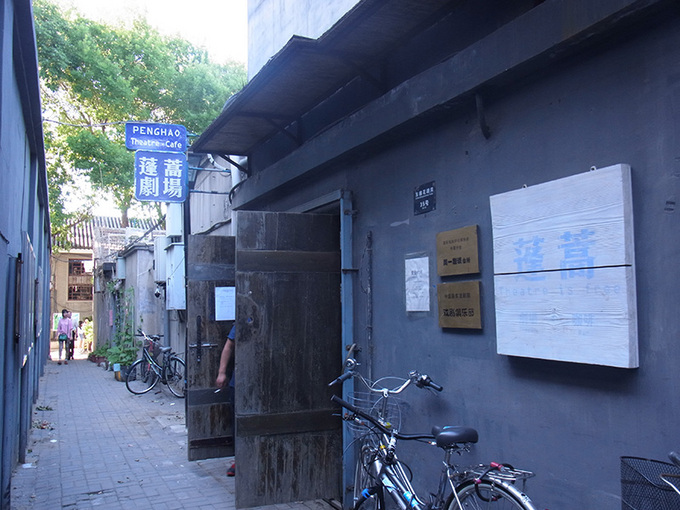

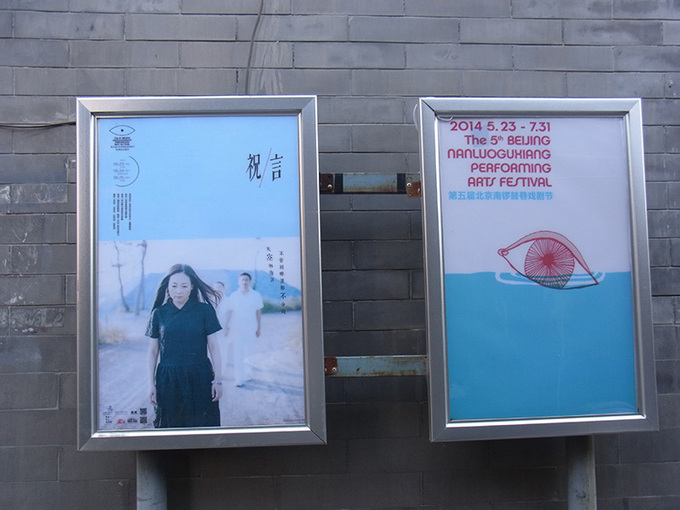
There were, of course, numerous external factors that made this initiative possible.
Take for instance the circumstances that surround the theatre and this festival. Penghao Theatre is a privately run theatre, which is quite unusual in China. Normally, theatres are run by the government and governmental institutions or organizations, and private theatres are still very rare. In Beijing, in particular, there have been several attempts for privately-run theatres, but most went under soon after opening, proving the whole idea unsustainable. But as if to compensate for being so short-lived, private theatres, and Penghao Theatre in particular, are filled with passion and enthusiasm to create something new with their own hands.
In reality, management is very hard. This festival receives support from the local authorities, but is mostly financed through the substantial personal funds invested by the owner of Penghao Theatre, Wang Xiang, who also runs dental clinics. This year, the subsidies for the festival were suddenly reduced, but the organizers maintained its scale. Parallel to his work, Wang Xiang runs the theatre together with producers Liang Dandan and Lai Huihui (for details, see the article Beijing's experimental theater, the challenge undertaken by Penghao Theatre in Performing Arts Network Japan). Against this backdrop, Wang Xiang continues to organize the international festival every year.
In interviews, when asked about the festival, Wang Xiang sometimes steers the conversation in a philosophical direction with questions such as "What is human existence?" but he never forgets his sense of humor. (It is probably difficult to express critical opinions on specific topics. In fact, the comments provided by Wang for the festival pamphlet had to be revised, and the pamphlet reprinted.) "If push comes to shove, I will sell my house but will continue organizing the festival. If we hold on for three years, the situation will probably change," says Wang with a cheerful smile. But in parallel to his optimistic attitude, I feel his strong sense of mission trying to begin from Penghao Theatre to create new values and a new future. That is probably why he continues to organize the festival with such various programs and on a scale much too large for the size of his theatre.
Naturally, the project receives broad international support. The festival features numerous programs from European countries. Among programs presented by Asian countries, Japanese programs especially occupied an overwhelmingly dominant position this year. In addition to Makoto Sato, a large number of representatives of Japan's performing arts scene, such as Oriza Hirata, Koji Hasegawa, Un Yamada, and Naoto Iina, took part in the festival, through both theatrical productions and workshops.
The large number of workshops is one of the characteristics of the Nanluoguxiang Performing Arts Festival. This demonstrates that Penghao Theatre functions as a meeting ground for people who, in addition to watching theatrical performances, want to learn new things and create, with their own hands, a new theatrical scene in China.
I delivered a lecture on Japan's contemporary drama at the café of Penghao Theatre, and despite the fact that the lecture was announced only few days in advance, the venue was packed with some 30-40 people and it was standing room only. The audience greedily absorbed all information about the history of theatre in other countries and specific theatrical productions, methods for staging a performance, etc.
I also interviewed choreographer Wen Hui of the performance company Living Dance Studio, who is actively involved in the experimental theatre scene on a global level, and the director of the Paper Tiger Studio Tian Gebing. Both attended the festival frequently. Their dance studios develop activities not only in China, but also overseas, including Europe, and have been invited to festivals in Japan.
(On a different note, from these interviews I gathered that their activities are conducted mainly in China and Europe. The details I learned about their performances in Japan, too, were revealed mostly in the context of their work in Europe. The direct connections of choreographer Wen Hui with Japan are growing stronger, but the fact that the audience in Japan, a country geographically so close to China, is learning about these Chinese artists via Europe and other countries made me feel the rift between our two nations. Also, they organize a festival at a theatre that also doubles as their atelier. The festival features participation from Japan, but it still has not reached a level at which the program is arranged based on knowledge of the overall situation of performing arts in Japan. Rather, the organizers invite potential participants through incidental acquaintances in the relevant circles. For me, it became painfully obvious that we still have not laid the groundwork for mutual sharing of information.)
Tian Gebing, the director of the Paper Tiger Studio, supports young directors who participate in the festival by co-producing their works with a German theatre. He has created a network with various European theatres, and provides this network to the younger generation as a venue for producing and learning theatrical performances.
That is why, despite the fact the younger generation of artists constitutes the core of this theatre, it is a place for cultural exchange that transcends generations with the goal of creating a new theatrical scene. The Japanese programs at the 5th Nanluoguxiang Performing Arts Festival not only promoted exchange among young people, but also provided opportunities to access venues conductive to the birth of new trends and ideas.
Workshop and performance by Makoto Sato (Photo Sun Chi-cheng)
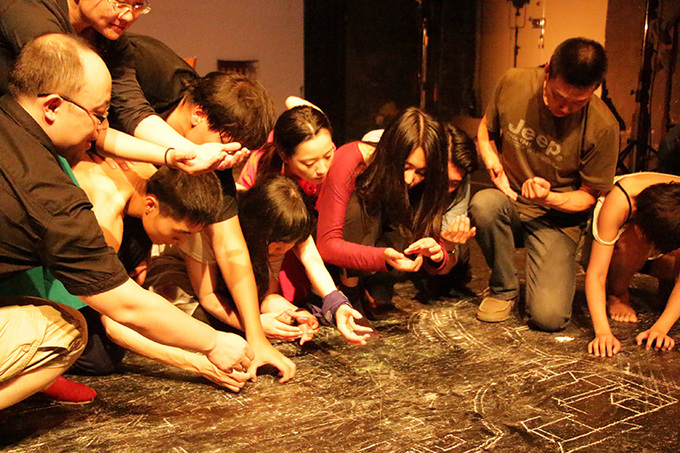


Workshop and post-event talk by Makoto Sato (Photo Sun Chi-cheng)
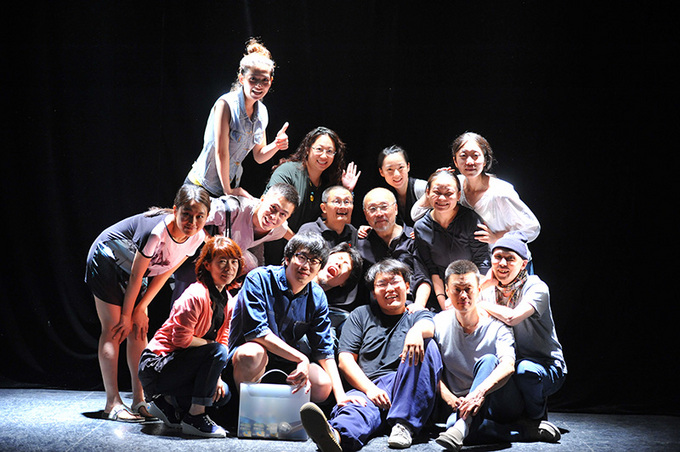
Participants in Makoto Sato's workshop (Photo Sun Chi-cheng)
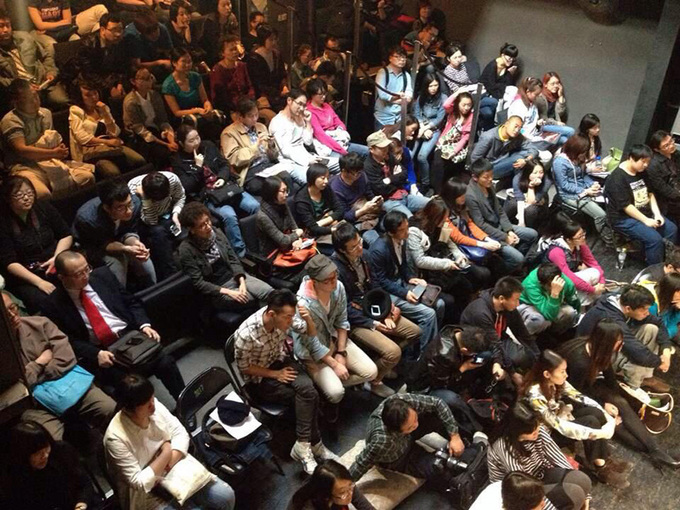
The audience at Penghao Theatre during Makoto Sato's workshop (Photo Sun Chi-cheng)
One of these symbolic programs was One Day in China 2014. It was not simply a performance to stage or a workshop to experience. Rather, it was a combination of both. At the workshop, the participants first shared the things they saw or felt on May 21, 2014, recreating the plot of Mao Dun's book with the same day several decades later. If I say that this was the starting point of the workshop, the readers may get the impression that the director already had a finalized image in his mind, and proceeded toward creating a performance in line with that image. In reality, however, an entirely different process occurred.
In order to avoid creating the performance through a process in which the participants would simply follow the instructions of the director, Makoto Sato, they were asked to do things that had no apparent relevance to the performance, and were given enough time to find their own approach through trial and error. This method encouraged the participants to communicate with each other and stimulated their creativity.
Two young artists who participated in the workshop as directors, Sun Xiaoxing and He Yufan, also directed part of the performance. Makoto Sato created the overall framework, the two young Chinese directors took care of the details, and each individual scene was created by the participants. That is why, until two or three days before the performance, no one had a clear idea what the completed work would look like. The participants were busy preparing to perform their parts in the études, and did not have the extra time and energy to think about the overall plot of the performance. This is how rushed things were. I believe that this was done intentionally by the director, in order to help them stay focused.
Naturally, a joint project of this scale and nature is not simple enough to allow the workshop to advance smoothly and without any problems. There were differences of opinion, and, probably due to various distinctive characteristics related to the country or region from which the participants were, compared with Japanese workshops, there were many participants who stated their views in a clear and straightforward manner. That is why it was inevitable that differences of opinion would appear between the participants and the directors who had to integrate each part of the performance into a single piece of work.
The approach that Makoto Sato took to solve this problem was discussion. Every day, the rehearsals went into overtime, but if there were more issues to discuss, he would set up individual interviews, or talk about things over lunch. In order to discuss, he would use the breaks at the rehearsal venue, or find space at the café of Penghao Theatre for the participants to hang out and just chat. The same approach applied for Naoto Iina, who participated in the visual aspects of the project, and the interpreter Akiko Nobue. The Japanese staff and the numerous Chinese participants made effort to spend time together and discuss their common issues. A group for workshop members was created in the Chinese SNS WeChat. In it, the participants engaged in casual chatting and exchanged messages with information on stage productions and auditions. In China, where Facebook, Line, and Google are not available, WeChat was the most stable tool for information exchange. (Even after the project, the participants, including the Japanese staff, continue to communicate through it.)
The performance derived from these efforts lacks a coherent overarching story. Rather, it is a collection of scenes that depict happenings at random bustling street corners on a certain day. There are scenes in which people read aloud, and scenes in which people sing. There are also scenes that depict pantomime or dance. Like people who traverse the busy city streets, space flows from 1936 through 2014, creating an ephemeral magical time slip. This is a metaphoric expression of the idea that ordinary people transcend space and time and do not change regardless of their environment. In other words, political and social factors may change, but despite the powerful impact of such factors, common people remain a constant.
Rather than doing a critical review of this production, I would like to describe the lively post-event talks. Unlike post-event talks that are organized after the end of a play in Japan, the audience at Penghao Theatre used the talks as an opportunity to express, in an open and straightforward manner, their impressions and ask questions about aspects of the performance they did not understand. I suppose they wanted to separate the production from other works since it was not a simple and easy-to-follow story and hear the opinions of people who actually participated in the stage performance. The post-event talks featured a steady flow of questions concerning every aspect of the production: from the experience of the participants to the intention of the directors, and the opinion of the critics. Such lively and dynamic post-event talks were held after the end of the performance every day. I believe this speaks volumes for the success of the production.
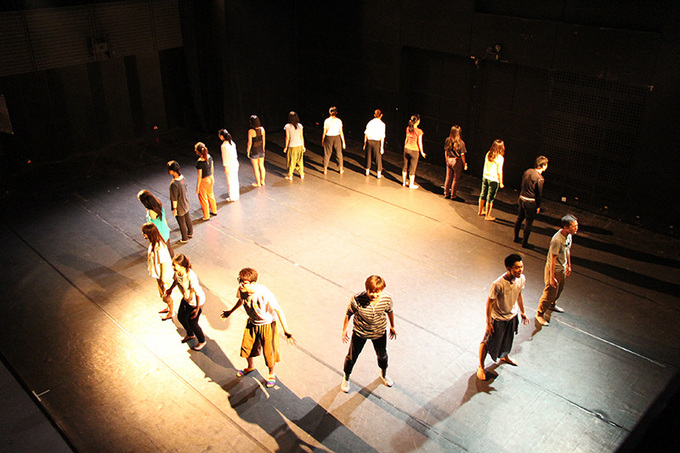
Un Yamada - workshop and performance
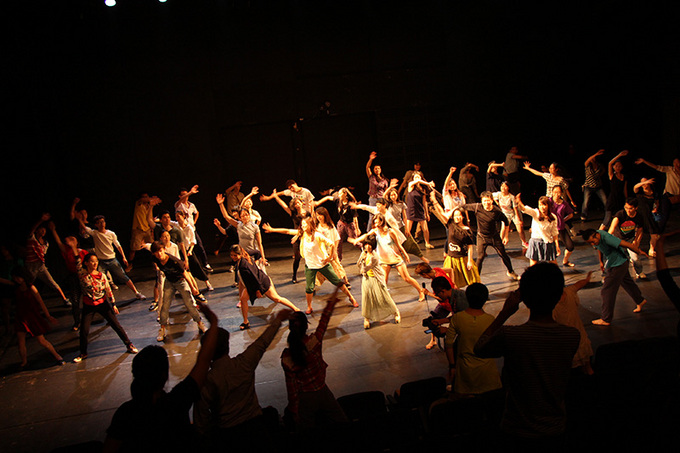
Un Yamada dancing together with the audience
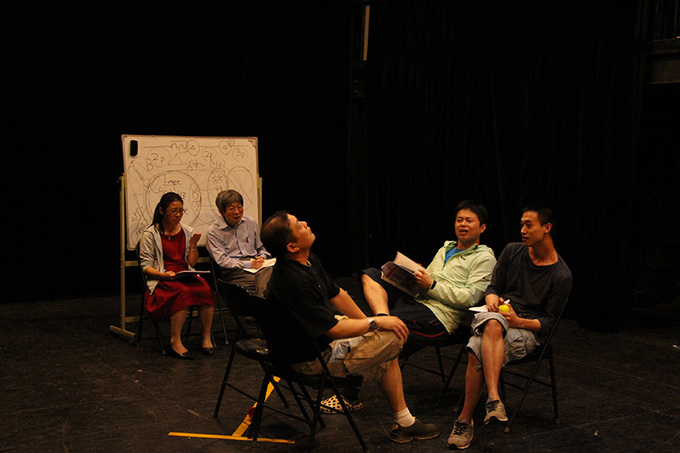
Oriza Hirata - workshop
【Related events】
Held on September 5, 2014 (Friday)
"Report Meeting on Contemporary Theatre in China - Current Situation and Future Perspectives for Japan - China Performing Arts Exchange"
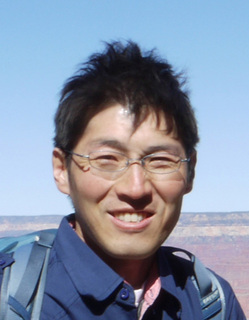 Hiroyuki Takahashi
Hiroyuki Takahashi
Born in 1978, Hiroyuki Takahashi is known as a theatre critic. His critical articles are published in a serialized format in Theatreux, Toshoshimbun, etc. He is author of numerous critical essays, including Pre-underground Theatre and the Campaign against the Japan-US Security Treaty in the 1960s (Hikyokenkyu), The Distorted Position of Minorities - Kohei Tsuka (Bungei Bessatsu), Atomic Bomb Theatre and Nuclear Power Plant Theatre, Theatrical Space of the Noughties (Statement) and others. Hiroyuki Takahashi is an adjunct lecturer at Japan Women's University and Toho Gakuen College of Drama and Music. In FY2013, he was an Asian Cultural Council fellow and a visiting research fellow at New York University. He also served as editor for the Japanese theatre magazine Theatre Arts for eight issues (from No. 35 through No. 42).
Keywords
- Theater
- International Exhibition
- China
- Japan
- Germany
- Nanluoguxiang Performing Arts Festival
- Makoto Sato
- Penghao Theatre
- Mao Dun
- Beijing
- Tianjin
- Chongqing
- Wang Xiang
- Liang Dandan
- Lai Huihui
- Oriza Hirata
- Koji Hasegawa
- Un Yamada
- Naoto Iina
- workshop
- Living Dance Studio
- Wen Hui
- Paper Tiger Studio
- Tian Gebing
- Sun Xiaoxing
- He Yufan
- Akiko Nobue
Back Issues
- 2025.7.31 HERALBONY's Bold Mis…
- 2024.10.25 From Study Abroad in…
- 2024.5. 2 People-to-People Exc…
- 2022.11. 1 Inner Diversity<3> <…
- 2022.9. 5 Report on the India-…
- 2022.6.24 The 48th Japan Found…
- 2022.6. 7 Beyond Disasters - …
- 2021.3.10 Crossing Borders, En…
- 2020.7.17 A Millennium of Japa…
- 2020.3.23 A Historian Interpre…

